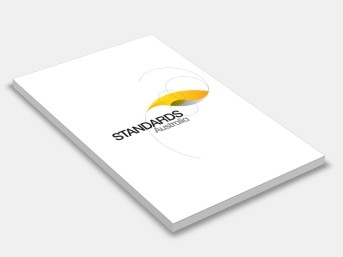AS/NZS 3013:1995 Electrical installations - Classification of the fire and mechanical performance of wiring systems
Standards Australia/Standards New Zealand
This revision was undertaken in order to include requirements for busways. It is intended that at the next revision the Committee will consider the results of further testing of wiring systems and will cover all aspects of the Standard including:
(a) The methods used to perform the fire test and the fire with water test; and
(b) The means of classifying and identifying complete wiring systems.
The need to maintain circuit integrity in buildings, oil rigs, ships, and other structures under fire conditions is most important for wiring systems associated with firefighting, evacuation, and other safety functions.
While there are some Standards available for fire testing of cables (e.g. IEC 331, Fire- resisting characteristics of electric cables; IEC 332, Tests on electric cables under fire conditions; and BS 6387, Specification for performance requirements for cables required to maintain circuit integrity under fire conditions), it was considered that these did not form an adequate basis for a system of classification. For this reason, AS 1530.4, Fire-resistance test of elements of building construction has been used as the basis of fire rating of wiring systems in this Standard. Testing in a horizontal furnace has been prescribed since it was considered that this represents the most onerous condition.
This Standard provides a system of classification of the degree of protection inherent in wiring systems against accidental mechanical damage. It does not consider protection against deliberate tampering. The levels of mechanical protection are specified in terms of impact energies and cutting forces.
Statements expressed in mandatory terms in notes to tables and figures are requirements of this Standard.
Appendices designated as ‘normative’ are essential to the understanding or implementation of this Standard. Appendices designated as ‘informative’ give additional information, recommendations, guidelines or other non-mandatory statements.
First published in Australia as AS 3013-1990. Jointly revised and designated as Joint Standard AS/NZS 3013:1995.
This Standard sets out a classification system for wiring systems according to their ability to—
(a) maintain circuit integrity under fire conditions for a specified period; and
(b) maintain circuit integrity against mechanical damage of specified severity.
It specifies type tests to determine the performance of the various types of wiring system.
NOTE: Elements of a wiring system may need replacement after exposure to a hazard.
Contents:
Section 1: Scope And Application
Section 2: Classification System
Section 3: Classification Of Fire-Tested Wiring Systems
Section 4: Classification Of Mechanically-Tested Wiring Systems
Appendix A: Fire Test Method-Wiring Systems
Appendix B: Fire Test Method-Supports And Fixings
Appendix C: Mechanical Test Method-Impact Test
Appendix D: Mechanical Test Method-Cutting Test
Appendix E: Mechanical Test Method-Saddles
Appendix F: Fire And Water Test Method
Appendix G: Applications Guide
Special Wiring Systems.
